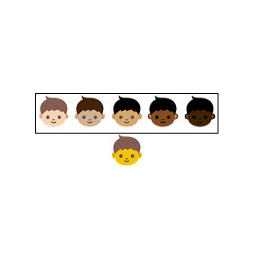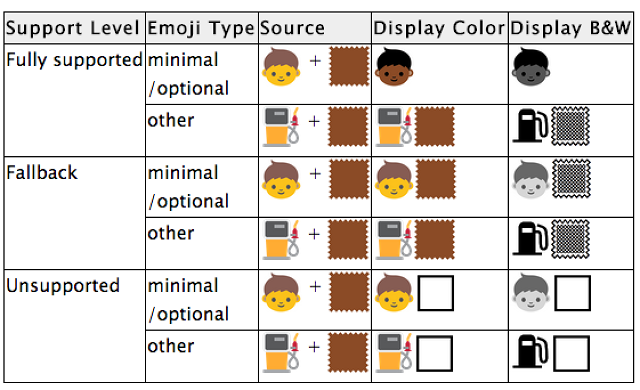A Diverse Emoji Palette Could Be On The Way! Here’s How It Might Work
Google and Apple proposed a Unicode update that would make different-hued emoji faces an option.
Back in March, Apple admitted that the emoji palette millions of people use to communicate with their friends wasn’t diverse enough and said it was actively working on a solution. There are characters for aliens, princesses, devils, and poop, but there weren’t, say, any black emoji. Or vaguely brownish ones that could pass for a confusingly handsome Filipino dude.
That could change soon, though. Today, the Unicode Consortium, which provides the standard character set built into keyboard software, published a proposal submitted by Google and Apple that would give users more control over what their emoji look like. If implemented in Unicode Version 8.0, this “emoji modifier”—proposed by Google’s Mark Davis and Apple’s Peter Edberg—would allow up to six different skin tones to be selected for a small section of the emoji character set.

“People all over the world want to have emoji that reflect more human diversity, especially for skin tone,” they write in the proposal. “The Unicode emoji characters for people and body parts are meant to be generic, yet following the precedents set by the original Japanese carrier images, they are often shown with a light skin tone instead of a more generic (inhuman) appearance, such as a yellow/orange color or a silhouette.”
As for how that might work: Davis and Edberg suggest that an option for different face colors can be actuated on a phone when a user holds down on a face, like, say, when you type the “é” in “Beyoncé” by holding down “e.”

“Of course, there are many other types of diversity in human appearance besides different skin tones: Different hair styles and color, use of eyeglasses, various kinds of facial hair, different body shapes, different headwear, and so on,” they continue. “It is beyond the scope of Unicode to provide an encoding-based mechanism for representing every aspect of human appearance diversity that emoji users might want to indicate.”
I’m excited to see how/if the feature plays out in a future version of Unicode. But, quite frankly, I’m with Anil Dash here:
![]()
(155)














